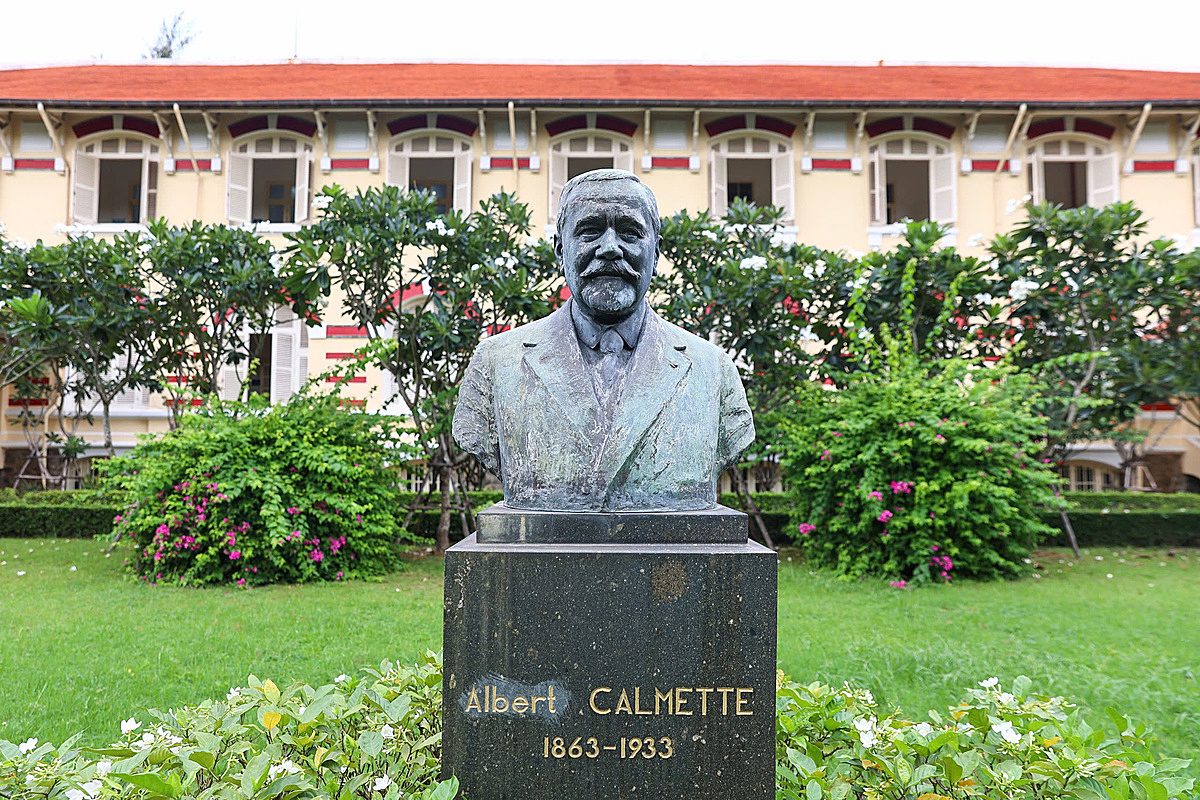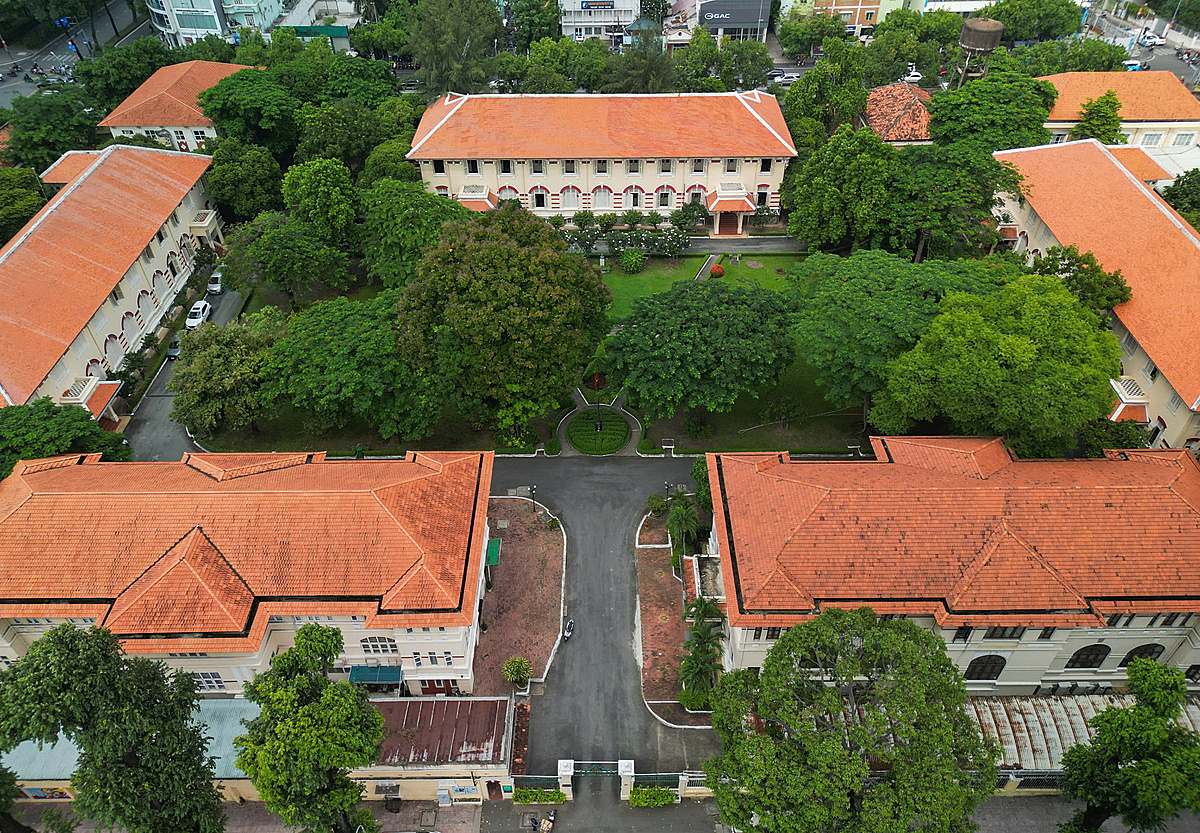In Ho Chi Minh City, Albert Calmette's influence remains palpable after 135 years. The Saigon Pasteur Institute, which he founded, is now the Ho Chi Minh City Pasteur Institute, a leading research, disease surveillance, and vaccination center in southern Vietnam. A street and a bridge over the Ben Nghe Canal bear Calmette's name, commemorating the French doctor who left a profound mark on Vietnamese healthcare. For most Vietnamese children, Calmette's legacy is even more personal: a small scar on their shoulder from the BCG vaccination that protects against tuberculosis.
Born on 12/7/1863 in Nice, France, Albert Calmette studied at the Naval Medical School in Brest from 1881. At 20, he was assigned to Hong Kong's naval medical service, where he first encountered tropical diseases. He successfully defended his medical doctorate thesis on malaria at 23. After working in Gabon and Congo, he returned to Paris for an internship in bacteriology. His naval experience and understanding of bacteriology led Louis Pasteur to send him to Saigon in 1890 to establish the first Pasteur Institute outside of France, according to the Pasteur Institute in Paris.
In the tropical climate, where infectious diseases spread easily and medical resources were limited, Calmette faced numerous challenges in Saigon. Starting with a modest laboratory within the Military Hospital (now Children's Hospital 2), he shipped equipment from France, trained the first technicians, and quickly established a new facility at a different location – the present-day Ho Chi Minh City Pasteur Institute on Nam Ky Khoi Nghia Street.
Calmette not only brought bacteriological knowledge to a distant land but also directly addressed prevalent diseases. With smallpox, rabies, and snakebites claiming thousands of lives annually, he simultaneously built the institute and refined techniques to perform diagnostic tests and produce smallpox and rabies vaccines adapted to the tropical climate. He also developed an antivenom serum, providing a lifeline to the people of southern Vietnam.
In less than three years, the Saigon Pasteur Institute grew from a small operation into a major medical center for Indochina, attracting patients from Malaysia, Hong Kong, and Shanghai. In 1893, when a severe illness forced his return to France, Calmette left behind a solid foundation, paving the way for the Pasteur Institute's continued development in Saigon.
 |
Statue of Albert Calmette at the Ho Chi Minh City Pasteur Institute. Photo: Quynh Tran |
Statue of Albert Calmette at the Ho Chi Minh City Pasteur Institute. Photo: Quynh Tran
Back in France, he continued his research, developing the first antitoxin against venomous snakebites using immune serum from vaccinated horses (Calmette's serum). He also participated in developing the first immune serum against the plague, based on Alexandre Yersin's discoveries, and later traveled to Portugal to study plague prevention.
In 1899, scientists Louis Pasteur and Emile Roux entrusted Calmette with establishing the Pasteur Institute in Lille, where he worked for 25 years. There, he pioneered the concept of "social medicine," emphasizing disease prevention and improved living conditions as crucial as laboratory research. He advocated for upgrading worker housing, renovating slums, treating wastewater, opening dispensaries for the poor, and even organizing field hospitals during wartime. For Calmette, medicine had to extend beyond the laboratory and into homes, streets, and factories.
The BCG Vaccine: A Milestone in the Fight Against Tuberculosis
From 1908, Calmette and his colleague Camille Guerin began researching a weakened strain of bovine tuberculosis bacteria, aiming to prevent tuberculosis, the "silent killer" claiming millions of lives annually. After over 200 cultures, they obtained the first BCG (Bacillus Calmette-Guerin) vaccine in 1921, beginning trials on French infants and eventually expanding globally.
A single small dose, leaving a characteristic scar on the arm, the BCG vaccine became a shield against this deadly disease. Adopted by the WHO and UNICEF for their Expanded Programme on Immunization, it is considered one of history's most impactful medical discoveries.
In a letter, Calmette wrote, "The scientific and social fight against tuberculosis has become a true obsession for me. I am better placed than anyone to understand the extent of the misery and devastation that this disease causes to the working class. Every day I witness the ineffectiveness of coordinating public and private efforts to fight tuberculosis."
Scientist Emile Roux noted that through his extraordinary work in Indochina over two and a half years, Albert Calmette demonstrated the immense value of microbiology. The institute he established in Saigon became a model for later Pasteur Institutes throughout the colonies, initiating a network of 33 institutes now spanning five continents.
 |
The Ho Chi Minh City Pasteur Institute today. Photo: Quynh Tran |
The Ho Chi Minh City Pasteur Institute today. Photo: Quynh Tran
Le Phuong












